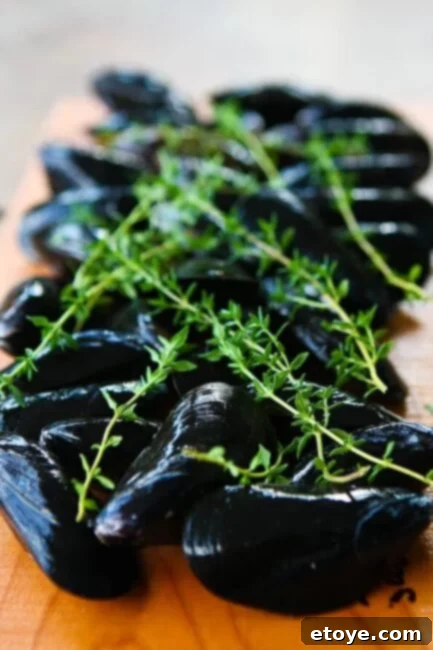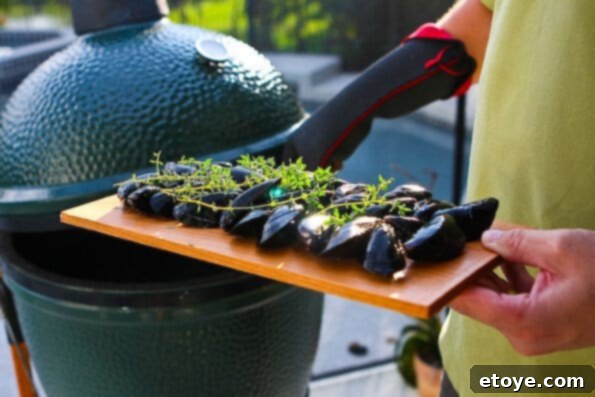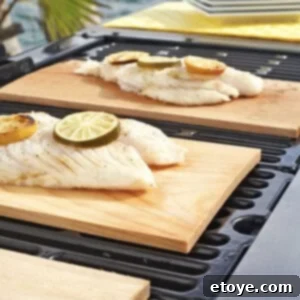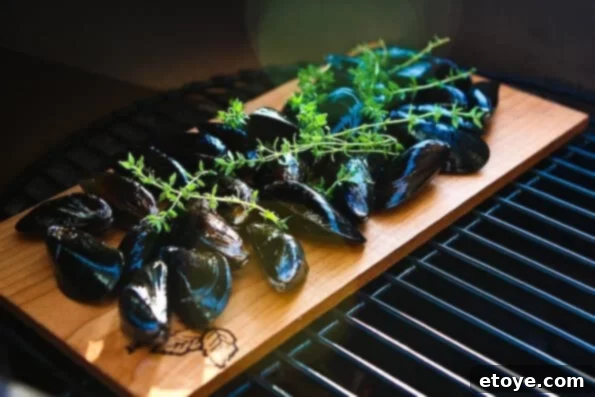Mastering the Grill with Ted Reader: A Journey into Plank Grilling and Flavor
If there’s one culinary wizard I’d invite into my kitchen right now to orchestrate a feast, it would undeniably be Ted Reader. He’s not just a chef; he’s a phenomenon, a man whose passion for fire and food is as untamed as his signature hairstyle. With every dish, he treads the thrilling edge where culinary genius meets outright madness, transforming simple ingredients into extraordinary experiences. His presence alone promises a spectacle, a testament to his vibrant and larger-than-life personality that perfectly complements his explosive flavors.
The magic Ted Reader weaves with wood, fire, and premium cuts of meat is truly captivating. It’s a dance between primal instinct and refined technique, a spectacle that captivates both the palate and the imagination. He elevates barbecue from a simple cooking method to an art form, consistently pushing boundaries and challenging conventional wisdom. His approach is bold, innovative, and deeply rooted in the elemental power of fire, creating dishes that are as memorable as they are delicious. His unique style has not only earned him a devoted following but has also inspired countless home cooks to embrace their inner grill master.

Unlocking the Secrets of Plank Grilling with Ted Reader
To truly grasp the essence of Ted Reader’s innovative spirit, one simply needs to open his acclaimed book, Napoleon’s Everyday Gourmet Plank Grilling. This book isn’t just a collection of recipes; it’s a testament to a unique philosophy of cooking that dates back centuries, refined for the modern palate. At its core, plank grilling is deceptively simple, yet it yields results that are anything but ordinary. Imagine this:
The Art of Plank Grilling: A Brief History and Modern Application
- Man builds fire: The most ancient and fundamental act of cooking.
- Nails big salmon fillet to tall plank: A technique steeped in Native American tradition, where food was cooked vertically near open flames.
- Sticks plank standing up near fire: Allowing the radiant heat to gently cook the food, preventing direct charring.
- Heat from fire cooks salmon slow: Ensuring even cooking and moist, flaky results.
- Plank gives good taste: The magic ingredient – the wood itself infuses the food with subtle, smoky flavors.
This method isn’t merely about cooking; it’s about infusing, tenderizing, and creating a sensory experience. The wood plank acts as both a cooking surface and a flavor enhancer, imparting unique smoky notes that elevate fish, poultry, and even vegetables to gourmet status. Ted Reader’s genius lies in taking this ancient art and making it accessible and exciting for every home cook, proving that sophisticated flavors don’t require complex techniques, just a bit of fire, wood, and passion.

Grilling Without Limits: Adapting to Your Environment
Indeed, Ted Reader is audacious enough to dedicate an entire cookbook to the captivating art of plank grilling. Any culinary expert who begins a recipe with the exhilarating instruction, “build a bonfire,” immediately earns my respect and a standing invitation to my home. This fearless approach speaks volumes about his commitment to authentic, open-fire cooking, a method that connects us to the most primal aspects of our culinary heritage.
However, we live in a world where passion often meets practicality. For those of us residing in communities with strict regulations—where neighborhood watch committees might meticulously monitor your mulch levels and levy fines for imperfect lawn edging—igniting a four-foot fire pit in the backyard might not be the most prudent choice. It’s a common dilemma, balancing the desire for grand outdoor cooking with the realities of modern suburban living. Fortunately, Ted Reader, ever the thoughtful culinary innovator, understands these constraints. His book thoughtfully includes over a hundred other equally fantastic recipes designed for the more conventional BBQ grill, ensuring that everyone, regardless of their living situation, can experience the joy of his flavorful creations without incurring the wrath of the homeowners’ association.
This adaptability is key to his widespread appeal. Whether you have ample space for an elaborate setup or are limited to a compact patio grill, Ted Reader provides the tools and inspiration to achieve incredible results. He champions the idea that exceptional food can be created anywhere, emphasizing technique and ingredient quality over sheer scale. This makes his work not just aspirational but eminently achievable for a diverse audience of grilling enthusiasts, from the novice to the seasoned pitmaster. His recipes demonstrate that the spirit of barbecue and the pursuit of deliciousness can thrive in any environment, proving that limitations can often spark even greater creativity in the kitchen or, more accurately, by the grill.

Mastering the Art of Plank Grilling: Essential Tips for Success
If you’re new to the world of plank grilling, embarking on this culinary adventure can be incredibly rewarding. The key to success begins with selecting the right wood. Always ensure you use wood specifically designed and certified for cooking – this is crucial for both flavor and safety. Never use construction lumber or any pre-treated wood, as these can contain chemicals that are harmful when burned and will impart unpleasant flavors to your food. Dedicated cooking planks are free from these additives, guaranteeing a pure, aromatic smoke infusion.
The next vital step is proper plank preparation, primarily soaking. This process prevents the plank from igniting directly on the grill and instead encourages it to smolder, creating a gentle steam and smoke that infuses your food with incredible flavor. For softer woods like cedar and alder, a minimum of two hours of soaking is recommended. Harder woods such as cherry, hickory, and maple benefit from an overnight soak to ensure they are thoroughly saturated. Neglecting this step will inevitably lead to a rapid incineration of your beautiful plank on the hot grill grates – a lesson many, myself included, have learned through firsthand experience. A simple way to soak is by submerging the plank in a large baking sheet or a clean sink, often weighing it down with a bowl or a heavy object to keep it fully immersed.
Investing in quality planks also makes a significant difference. My personal preference leans towards the excellent selection from Sur La Table, where they offer convenient packages containing four different types of woods: maple, cedar, hickory, and alder. Each wood variety offers a distinct flavor profile: cedar is classic for salmon and other delicate fish, maple provides a sweeter, milder smoke perfect for poultry and vegetables, hickory delivers a robust, bacon-like flavor ideal for pork and beef, and alder offers a subtle, sweet smoke that complements a wide range of foods. Experimenting with different woods will allow you to discover your favorite pairings and expand your plank grilling repertoire, adding layers of delicious complexity to your outdoor cooking adventures.


The Essential Guide to Buying and Preparing Mussels for Grilling
Choosing the Freshest Mussels
The foundation of any exceptional mussel dish lies in selecting the freshest possible seafood. When you’re at the fishmonger, don’t hesitate to engage them. Ask how recently the mussels arrived and how long they’ve been stored. Trust your senses: fresh mussels should have a clean, briny smell, reminiscent of the ocean. Avoid any mussels that emit a strong, fishy odor or appear dried out, sad, or have excessively open shells. While it’s ideal to have the fishmonger meticulously select each mussel for you, ensuring every one is perfect, this “pain-in-the-butt” service is often best requested when there isn’t a long queue behind you.
Proper Storage for Optimal Freshness
Once you bring your mussels home, immediate and proper storage is paramount to maintain their freshness and ensure their vitality. Unwrap them straight away; mussels are live creatures and need to breathe. Take two large bowls. Fill the larger of the two approximately one-third with ice. Place the mussels in the smaller bowl, then nestle this smaller bowl into the ice in the larger bowl. This creates a chilled environment without submerging the mussels directly in water, which can drown them. Finally, drape a small, damp dishcloth over the mussels. This keeps them moist and mimics their natural habitat. Store this setup in the refrigerator until you are ready to cook. Following these steps allows you to keep the mussels alive and cold, even overnight, ensuring they are in prime condition for your plank grilling adventure.
Cleaning and De-Bearding: A Crucial Step
Before cooking, each mussel requires individual attention. Begin by inspecting them one by one. Under cool, running water, scrub the shells clean with a brush to remove any grit or barnacles. The next crucial step is “de-bearding.” Mussels have a fibrous “beard” that they use to attach themselves to surfaces. To remove it, firmly tug the stringy material towards the hinge of the mussel until it detaches. This helps to prevent a gritty texture in your finished dish.
The “Live Test” and Discarding Bad Mussels
During your inspection, all healthy mussels should be closed tightly. If you encounter any mussels that are slightly open, give the shell a gentle squeeze to close it, then release. A live, healthy mussel should remain closed. Any mussel that springs back open, or any that are cracked or damaged, must be discarded immediately. These could be dead or compromised, and cooking them poses a health risk. This diligent pre-cooking inspection is a simple yet essential step to ensure both the safety and deliciousness of your cedar-planked mussels.

Cedar-Planked Mussels Recipe: A Simple Yet Sophisticated Appetizer
This recipe for Cedar-Planked Mussels is an ideal introduction to the captivating world of plank grilling. Its simplicity allows the natural sweetness of the mussels and the subtle smoky notes of the cedar to shine through. While I prefer mine seasoned simply with a sprinkle of good sea salt and a zesty squeeze of lemon or lime, you are welcome to melt some butter and serve it warmed alongside for a richer dipping experience. A single medium-sized plank, typically around 15 inches by 7 inches, is perfectly suited to hold one pound of mussels, making it an excellent appetizer for two.
Recipe Details:
Yields: 2 servings as an appetizer
Prep time: 15 minutes (plus 2+ hours plank soaking time)
Cook time: 5-7 minutes
Ingredients:
- 1 pound (approximately 450g) fresh mussels, cleaned and de-bearded
- 1 cedar plank, specifically designed for grilling
- A small bunch of fresh thyme sprigs
- Flaky sea salt (such as Maldon or Fleur de Sel), for serving
- 1 lemon or lime, cut into wedges, for serving
- Optional: 2 tablespoons unsalted butter, melted (for dipping)
Instructions:
- Soak the Cedar Plank (2+ Hours Prior): Begin by submerging the cedar plank completely in water. A baking sheet works well for this; simply place the plank in it and weigh it down with a heavy bowl or a few cans to ensure it remains fully immersed. Allow softwoods like cedar to soak for at least 2 hours, and hardwoods like cherry or hickory for 4 hours or even overnight. This crucial step prevents the plank from burning and encourages a gentle smoke.
- Pre-heat Your Grill (15 Minutes Prior): Approximately 15 minutes before you plan to cook, pre-heat your outdoor grill to high heat. Ensure the grill grates are clean.
- Prepare the Mussels: While the grill heats, meticulously follow the directions above to clean and de-beard your fresh mussels. Discard any mussels that do not close after being tapped or squeezed, or any that are cracked.
- Pre-heat the Plank (5 Minutes): Once the grill is hot and ready, carefully lay the thoroughly soaked cedar plank directly onto the hot grill grates. Close the lid and allow the plank to pre-heat for approximately 5 minutes. This helps to activate the wood’s aromatic oils and prepares it for cooking.
- Grill the Mussels: Using long tongs or a heat-resistant spoon, carefully arrange the cleaned mussels in a single layer on the pre-heated plank. Scatter the fresh thyme sprigs evenly over the mussels. Close the grill lid and cook for 5 to 7 minutes. The mussels are done when their shells have fully opened, indicating they are cooked through.
- Serve Immediately: Carefully remove the plank from the grill. You can serve the mussels directly on the plank at the table, creating a dramatic and aromatic presentation. Discard any mussels that have not opened during cooking. To enjoy, gently pry open a mussel shell, sprinkle just a touch of flaky sea salt on the tender meat, and add a quick squeeze of fresh lemon or lime juice for a burst of bright, tangy flavor. If desired, serve with a small bowl of warm melted butter for dipping.
This Cedar-Planked Mussels recipe not only delivers incredible flavor but also offers an engaging and interactive dining experience. Enjoy the simple elegance of this dish and the delightful smoky essence imparted by the cedar plank, a true testament to the beauty of outdoor cooking.
